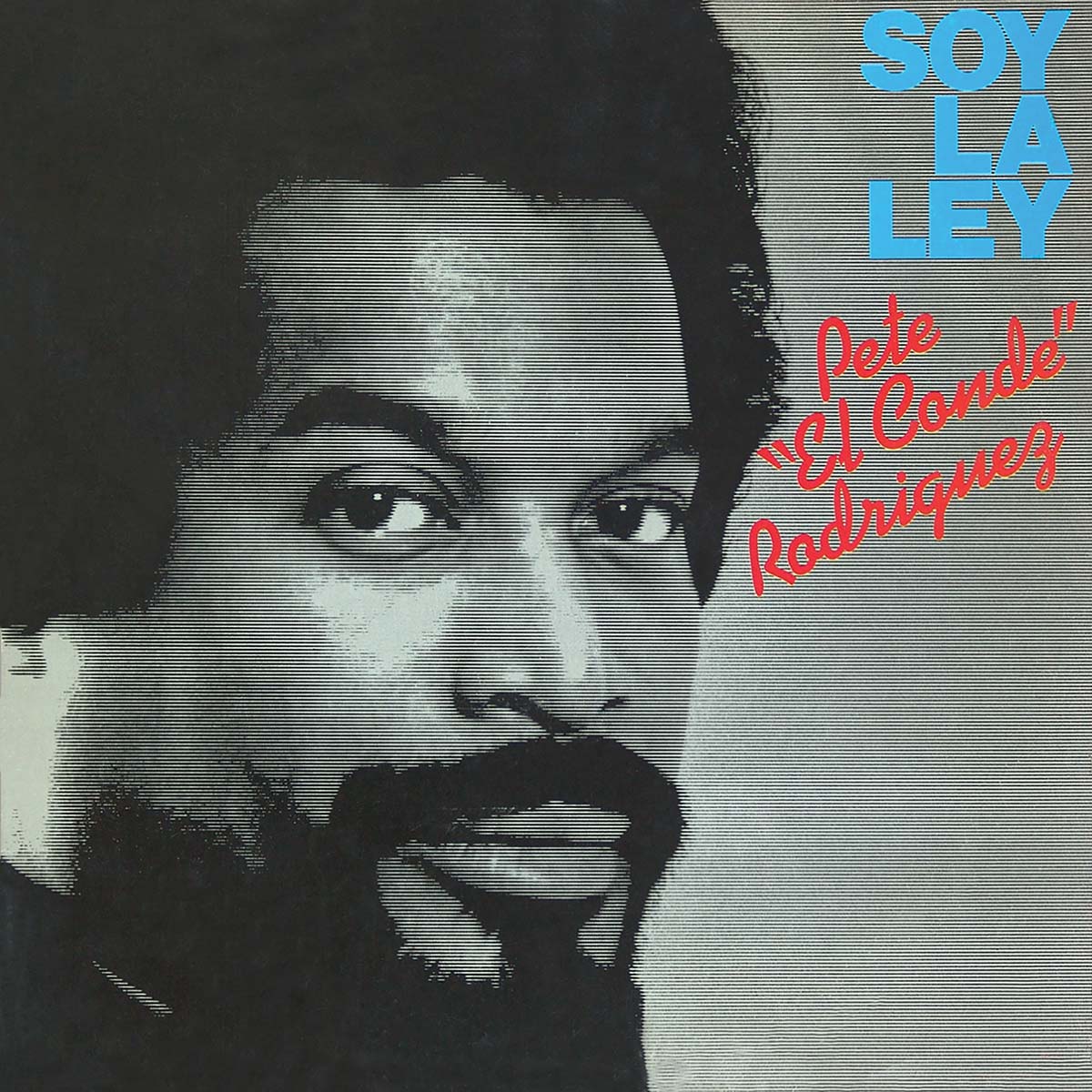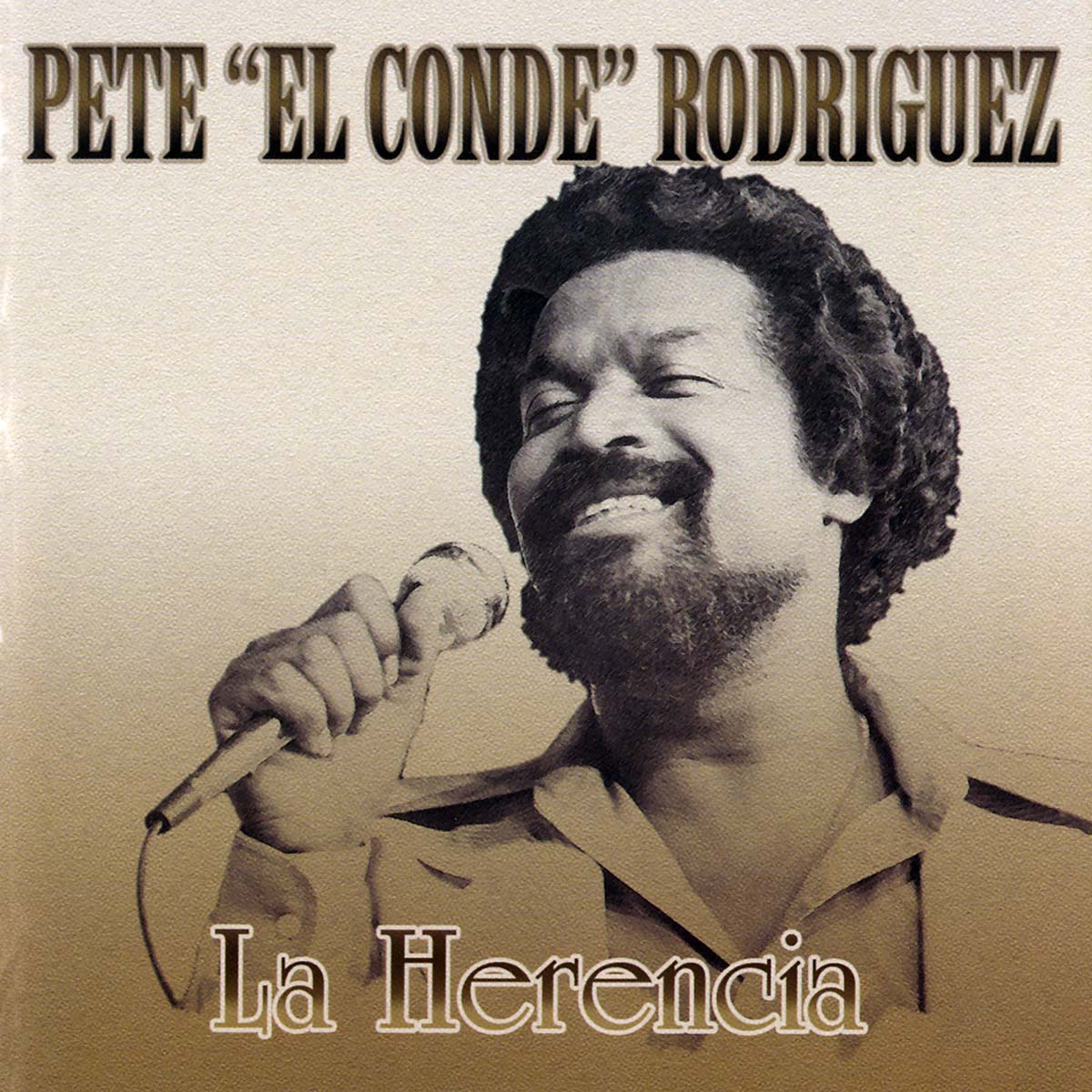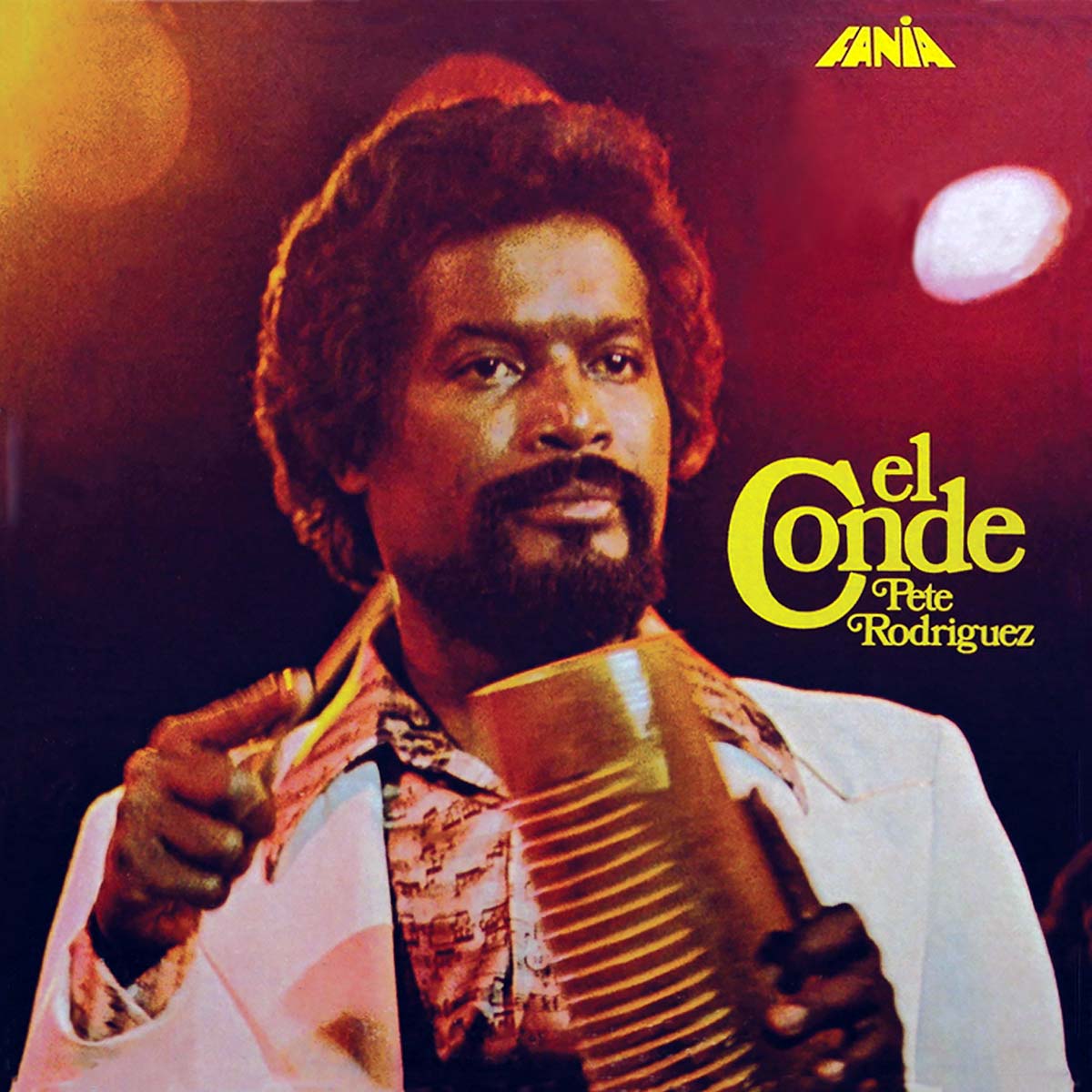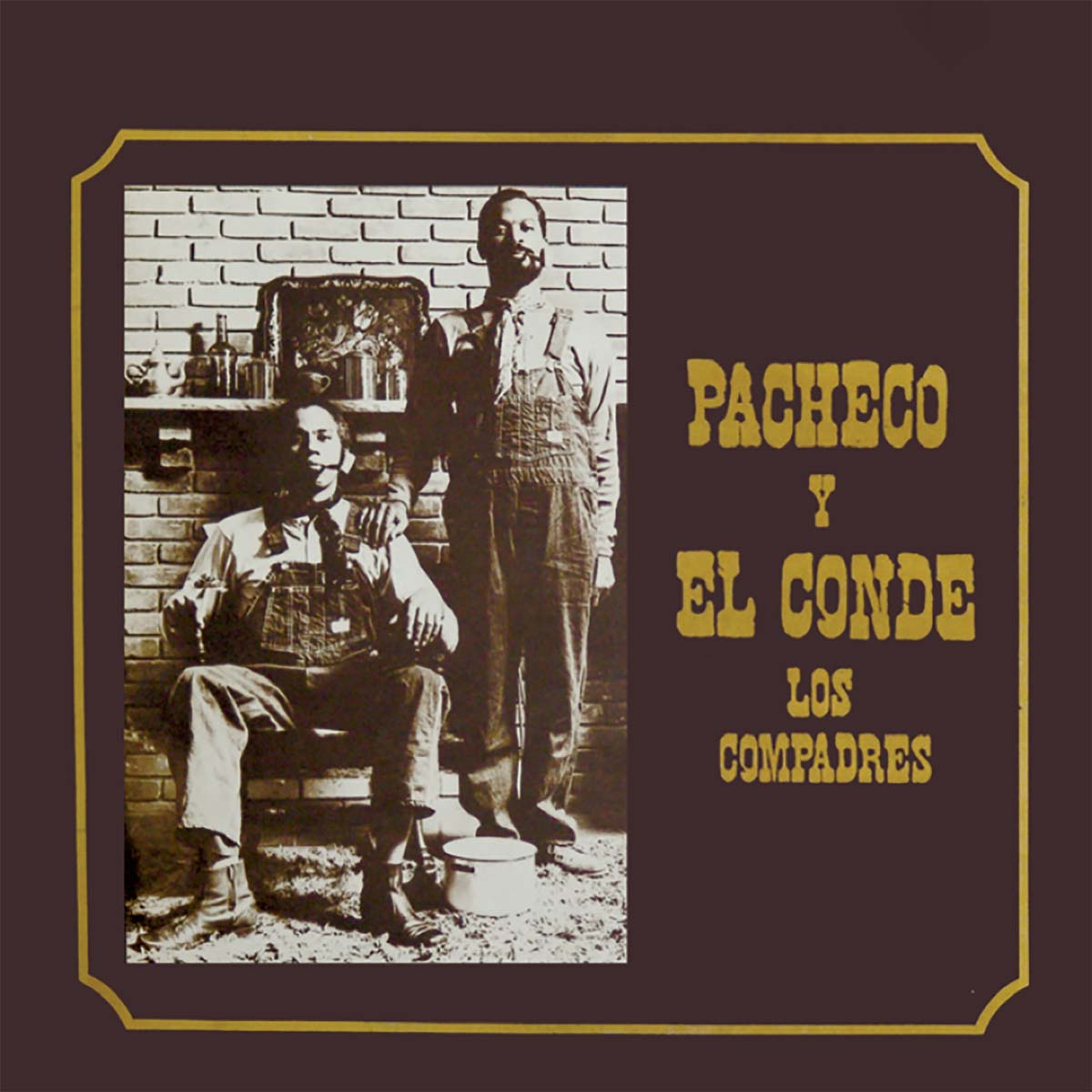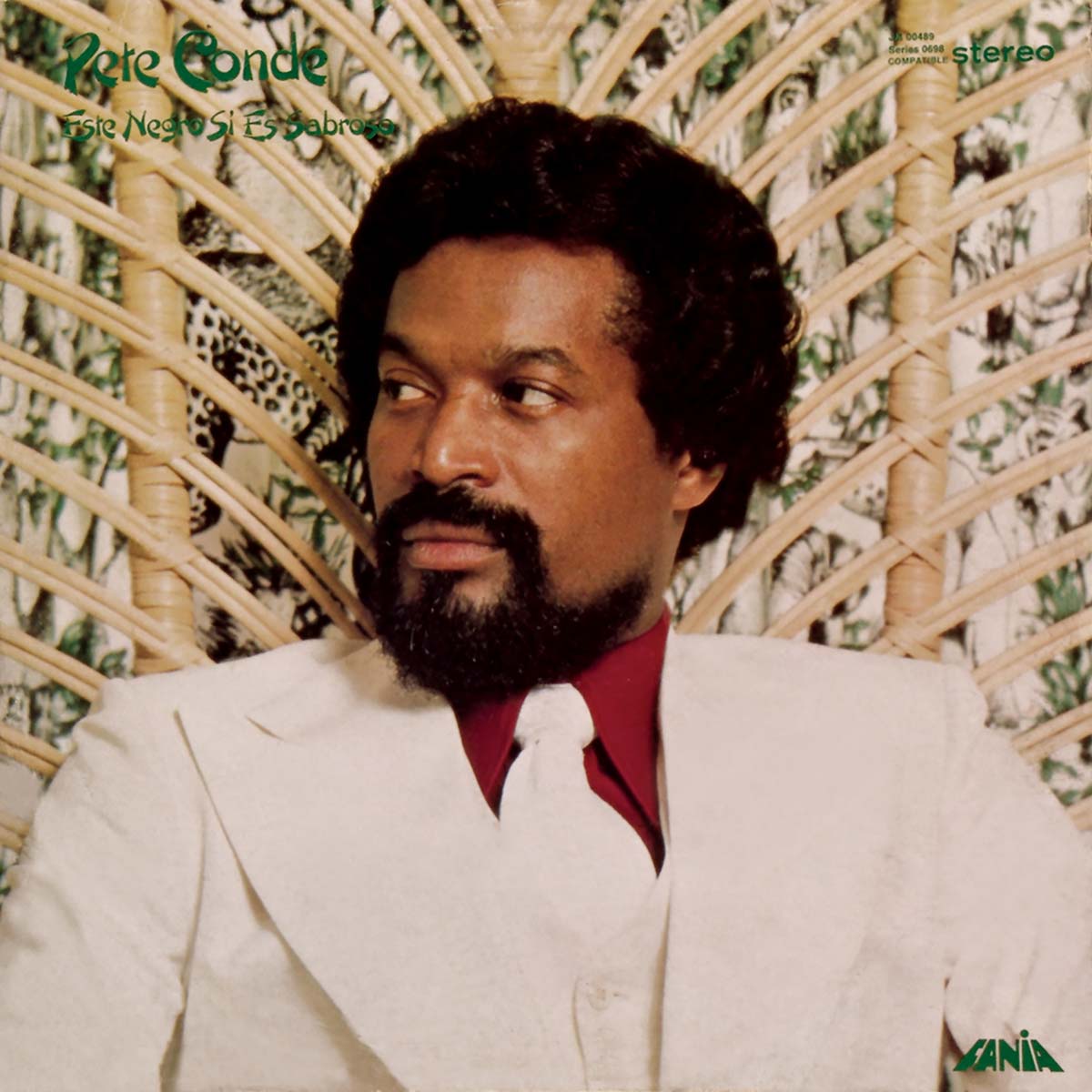
Pedro Juan Rodríguez (1935-2000) earned his nickname El Conde (The Count) for his regal stage presence, the noble smoky baritone of his voice, and the fact that he became a leader of memorable recording sessions such as the classic album “Este Negro Si Es Sabroso”. In 1974, after recording with other bands (Orquesta Oriental Cubana, Orquesta Broadway, Fania All Stars, Pacheco), El Conde started a new phase of his musical career. He decided to go solo and recorded other albums that solidified his name in the history of Latin music.
One only has to listen to “Este Negro Si Es Sabroso” (1975) to understand why many consider that album to be El Conde’s best and why the record is still listed as one of the best salsa recordings of all time. Important elements came together in the making of Sabroso—superb production, compositions, and arrangements, not to mention a hard swinging band (including the legendary trumpet player Victor Vitin Paz). More importantly, however, is the genuine concern of those involved to put all the elements together in a way that works (musically). Wife Frances Rodriguez explains:
“My husband was a perfectionist. He would not only select songs from excellent composers, but would select different arrangers for different songs according to what he would think was a perfect fit. Pete also insisted in having the arrangers of the compositions right there with the musicians in the studio. He did not allow the musicians to change a note without the permission of the arrangers. He knew that sometimes musicians tended not to go by what was written for them just because they found it difficult.”
Oscar Hernández, now a Grammy winner piano player and veteran of many bands (Ruben Blades, The Spanish Harlem Orchestra), remembers Rodríguez well. “Pete demanded plenty of rehearsals before going to the studio to record. We played sometimes even six or seven days a week. I feel very proud to have played on this record.”
Recording for Sabroso took place at the historical recording studio Good Vibrations in New York. Jon Fausty recalls the recording well: “Pete’s integrity in following tradition played a huge part in the conception of this production. Pete was intense in his interpretations. He would not accept an inspiration that he sang unless it sounded honest. ”
While many bands during the 1970’s followed the dominant trombone sound in New York, El Conde continued to use the contrast of sound textures created by the trumpet and the tres ( a Cuban guitar-like instrument) that was employed during his period with Johnny Pacheco. “Catalina la O” and “Pueblo Latino” are the two songs in Sabroso that became recognizable throughout the world through his tours, thus becoming part of El Conde’s identity. Most of the compositions in this recording were by the legendary composer Tite Curet Alonso. Alonso and El Conde never forgot their humble roots and were proud to be black Latinos creating music for el pueblo (the people). When El Conde interpreted Alonso’s compositions, he was inspired by the socio-political truths it addressed. “Pueblo Latino” addresses a contemporary problem: the lack of unity among Latinos. “Pueblo Latino, de cualquier lugar, ha llegado la hora de la unidad.” (“Latinos everywhere, this is the time to unite.”) “La Abolición” is a song that calls for solidarity with all blacks in the world. It makes the point that the political abolition of slavery has not ended nor has the suffering of blacks.
“Tumbakutun” seems to be a song designed to showcase El Conde’s singing. In the Caribbean musical traditions, there is a difference between being a singer and being a sonero. To be a sonero, you must have more than a good voice, you must also master the rhythmic complexity of the music, be a virtuoso in the art of vocal improvisation, and have sabor (the distinctive soul of the music). El Conde was a sonero in the truest sense. In the history of soneros, El Conde has the important place of being a bridge between the soneros of traditional Cuban son (e.g. Cheo Marquetti, Benny More, Miguelito Cuni) and the new generation of soneros who sprang up in New York and Latin America during the 1960’s and 1970’s. El Conde’s vocal approach sounded traditional but not old fashion. His sound was grounded in the past, but was new and fresh. El Conde’s phrasing and timbre were distinctive. In short, there is only one “El Conde” and Sabroso affirms his royal status.
Credits:
Julio Castro : Conga
Victor Cruz : Bongo
Jose Febles :Trumpet
Tony Cofresi : Trumpet
Junior Vega : Trumpet
Victor Paz : Trumpet
Harry Vigganno : Tres
Oscar Hernandez : Piano
Eddie “Gua Gua” Rivera : Bass
Produced by: Louie Ramirez
Executive Producer: Jerry Masucci
Recording Director: Frances Rodriguez
Arrangements by: Jose Febles, Papo Lucca, Louie Cruz
Engineered by: Jon Fausty
Original Cover & Liner Photos by: Lee Marshal
Original Album Design by: Pam Lessero
Written by Dr. Gregory “Goyo” Pappas


